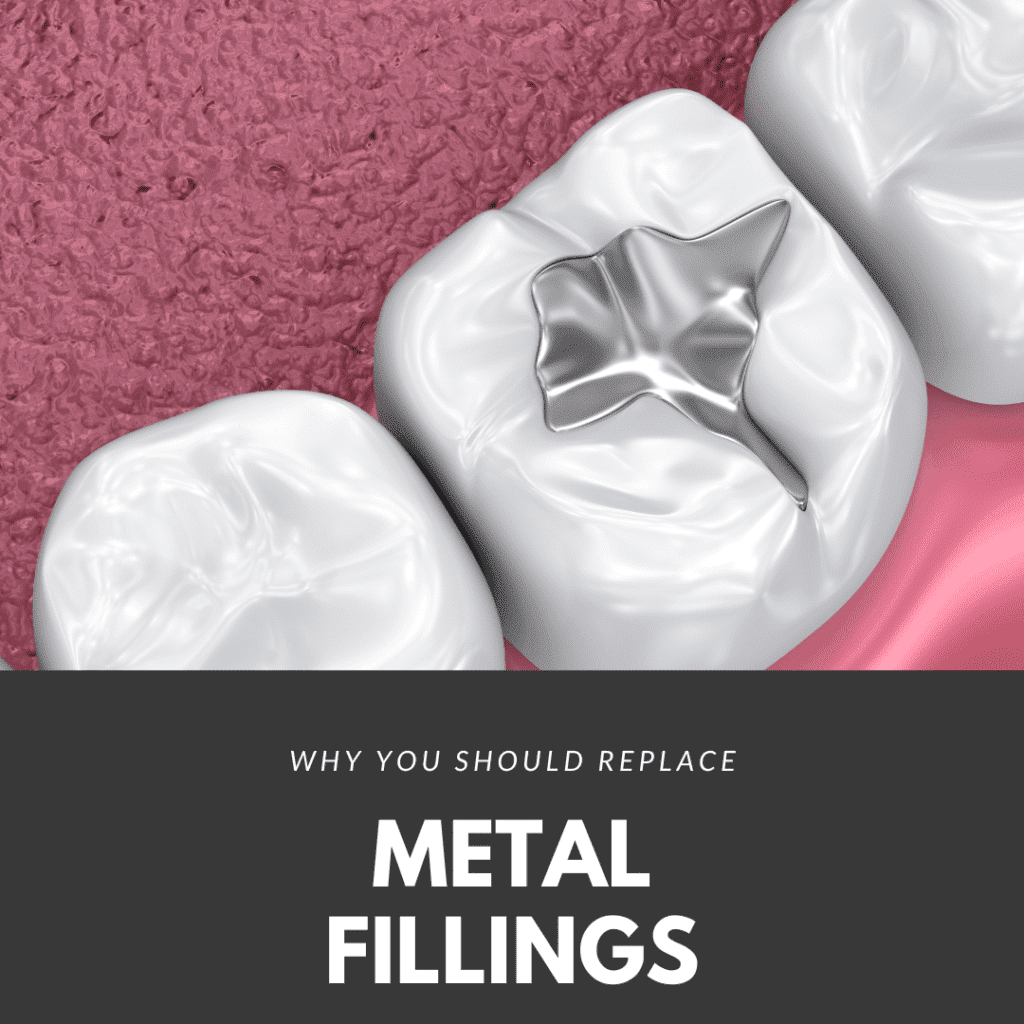As dentistry continues to evolve, so do the types of dental restorations. For instance starting in the 1800s, metal fillings were the dental restoration of choice. At that time, this was because metal fillings were the strongest, easiest to apply, and cheapest material for restoring damaged or decayed teeth. Metal fillings, also known as amalgam fillings because of the fact that they are an amalgamation of metals, are made using a mixture of silver, mercury, tin, and copper. In some cases, metal fillings can also be made of gold.
Nowadays, composite fillings are more highly recommended than amalgam or gold fillings. Still, many people currently have metal fillings since composite fillings were only introduced in the 1960s and took awhile to become popular. However, if you still have a metal filling, here is why your dentist thinks you should replace it with composite:

Metallic Appearance
Composite fillings are made from a dental material known as composite resin, which can be matched to the exact color of your teeth. This means that once the filling is in place, it will not be noticeable. Metal fillings, on the other hand, have a metallic appearance since they are composed entirely of metal. This makes them stand out compared to your natural tooth structure.
Stains Your Teeth
Overtime, metal fillings can corrode as their protective coating gets worn down from constantly chewing. As they corrode, their color darkens and can cause the enamel to turn blue or grey in color. When amalgam fillings are close to the gums, they can also cause the gums to develop something known as an amalgam tattoo.
Contains Mercury
Metal fillings are composed of powdered metal alloys that are bonded together using liquid mercury. While the American Dental Association has stated that mercury in metal fillings is safe, it is still not recommended for high risk individuals. This includes women who are pregnant or plan on becoming pregnant, children under the age of 6, people with kidney disease, or people with neurological conditions.
Metal Reacts to Temperature

Since mercury is used in thermometers for its ability to react to temperature, it is also important to note that metal fillings also react to temperature. This means that when you consume something hot, your filling will expand. This places extra pressure on your tooth and can even cause cracks. Conversely, when you consume something cold, your filling will contract. This can cause small spaces to form between the filling and your tooth. Additionally, fillings that expand and contract can lead to tooth sensitivity.
Preserves Less Natural Tooth Structure
When placing any type of filling, your dentist will first need to remove the damaged or decayed tissue, then shape the remaining tooth structure accordingly by removing some healthy tissue. When placing a composite filling, very little healthy tissue is removed. However, when placing a metal filling, more healthy tissue must be removed to make room for the filling. While this allows the filling to be placed, it can compromise the strength of your tooth and make it more susceptible to future damage.




